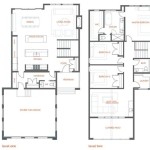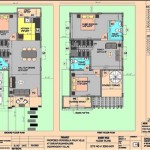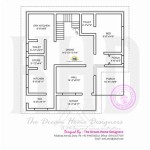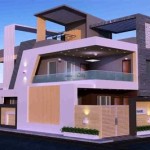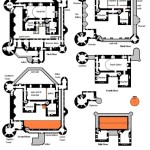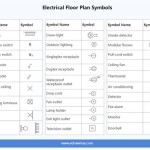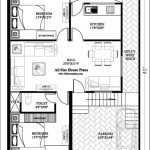Full Size House Bed Frame Plans: A Comprehensive Guide
Building a house bed frame offers a unique and charming addition to any bedroom. This style of bed, particularly popular for children's rooms, provides a sense of whimsy and can be customized to fit individual needs and aesthetics. A full-size house bed frame offers ample sleeping space for teenagers and adults while retaining the playful design element.
This guide explores the essential aspects of full-size house bed frame plans, covering various design considerations, material choices, and construction techniques. Careful planning and execution are crucial for a successful project. Selecting appropriate plans is the first step in ensuring a sturdy and aesthetically pleasing final product.
Free plans are available online from various sources, including woodworking communities, DIY blogs, and social media platforms. These resources often offer basic designs that can be adapted to individual needs. However, free plans may lack detailed instructions or professional drafting standards. Paid plans, available from woodworking plan websites and online marketplaces, typically offer more comprehensive instructions, detailed material lists, and professional-quality drawings.
When choosing a plan, consider factors such as skill level, available tools, and desired design complexity. Beginner-friendly plans typically feature simpler constructions and require fewer specialized tools. More complex designs might incorporate features like built-in storage, shelving, or decorative elements.
Material selection significantly impacts the bed frame's durability, cost, and appearance. Common choices include various types of wood, such as pine, cedar, and hardwoods like oak or maple. Pine offers a cost-effective option with a light natural color, while cedar provides natural insect resistance. Hardwoods offer greater durability and a more refined finish but come at a higher price point.
Plywood can be a viable alternative, especially for budget-conscious projects. It offers a consistent thickness and stability, making it suitable for various structural components. However, plywood edges require careful finishing to achieve a polished look.
Before beginning construction, gather all necessary tools and materials. Essential tools typically include a saw (circular saw, miter saw, or handsaw), drill, measuring tape, level, sandpaper, and safety equipment like safety glasses and a dust mask. The material list will vary depending on the chosen plan but generally includes lumber, screws, wood glue, and finishing supplies.
The construction process typically begins with cutting the lumber according to the plan's specifications. Accurate measurements and precise cuts are critical for ensuring proper assembly. Next, assemble the frame components using screws and wood glue, creating a sturdy and stable structure. It's crucial to follow the plan's instructions carefully and use appropriate clamps to hold pieces together while the glue dries.
Once the basic frame is assembled, add any desired decorative elements, such as a roof structure, railings, or window frames. These elements contribute to the house-like appearance and can be customized to match the room's decor. Sanding all surfaces smooth ensures a professional finish and prepares the frame for painting or staining.
Finishing the frame protects the wood and enhances its appearance. Options include painting, staining, or sealing with a clear coat. Painting allows for a wide range of color choices, while staining enhances the natural wood grain. A clear coat provides a protective layer against scratches and moisture.
Safety considerations are paramount throughout the entire project. Always wear appropriate safety glasses and a dust mask when working with power tools or sanding. Use proper lifting techniques to avoid back injuries, and ensure adequate ventilation when working with paints, stains, or sealants.
Modifications and customizations can personalize the house bed frame to suit individual preferences and needs. Adding under-bed storage drawers or incorporating shelving into the frame design can maximize space utilization. Customizing the roofline, adding decorative trim, or incorporating lighting elements can further enhance the bed's aesthetic appeal.
Regular maintenance ensures the longevity of the house bed frame. Periodically check for loose screws or joints and tighten them as needed. Clean the frame regularly with a damp cloth to remove dust and dirt. Reapply paint or sealant as needed to maintain the finish and protect the wood.
Building a full-size house bed frame can be a rewarding DIY project, offering a unique and personalized sleeping space. Careful planning, accurate construction, and appropriate finishing techniques are essential for achieving a sturdy, safe, and visually appealing final product. By following detailed plans and adhering to safety guidelines, individuals can create a charming and functional centerpiece for their bedroom.

House Frame Bed Full Size Her Tool Belt

House Frame Bed Full Size Her Tool Belt

Buy Full Size House Bed With Slats And Fences Montessori Plan Diy Floor Kid S Frame Project In

House Frame Bed Full Size Her Tool Belt

Diy Kids House Bed Twin Size Free Plans To Build Your Own

Diy Furniture Plans How To Build A Full Sized House Bed The Design Confidential

Montessori Bed Full Size With Fences House Plan Diy Toddler Frame Floor

Buy Full Size Montessori Toddler House Bed Diy Plans Wooden Floor Frame Plan With Rails In

Easy To Make Diy Twin Floor House Bed If Only April

Montessori Full Size House Bed Frame Handmade Solid Wood Kids Playhouse Furniture For Toddler Bedroom

